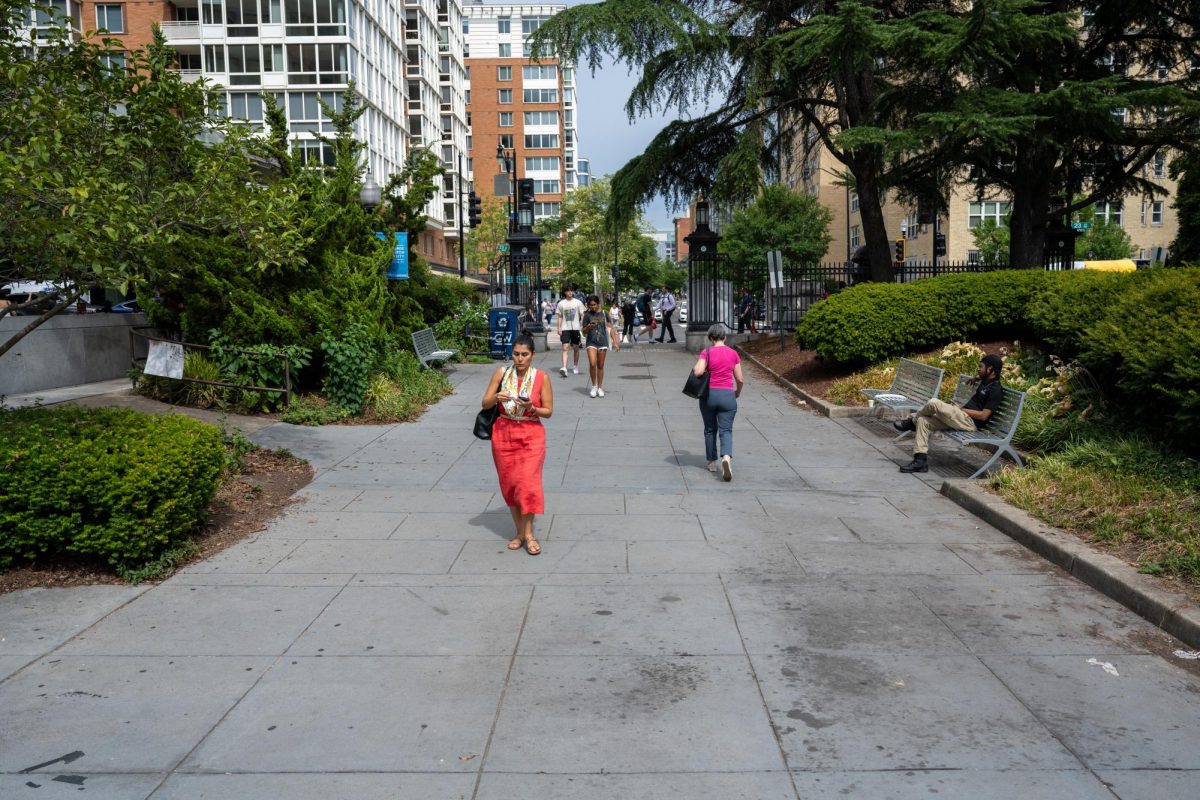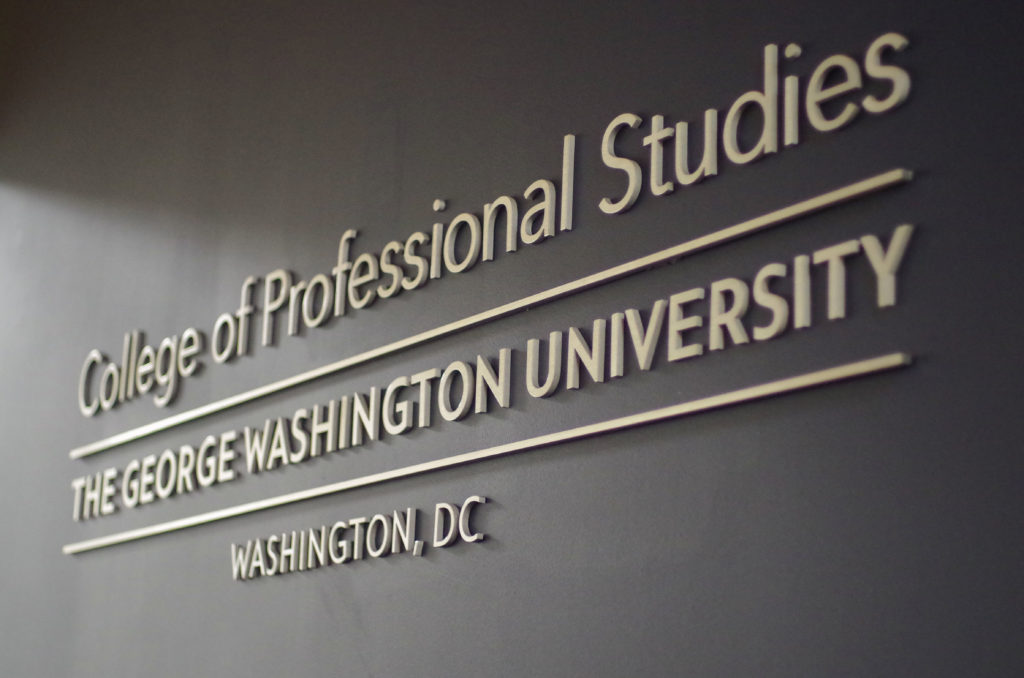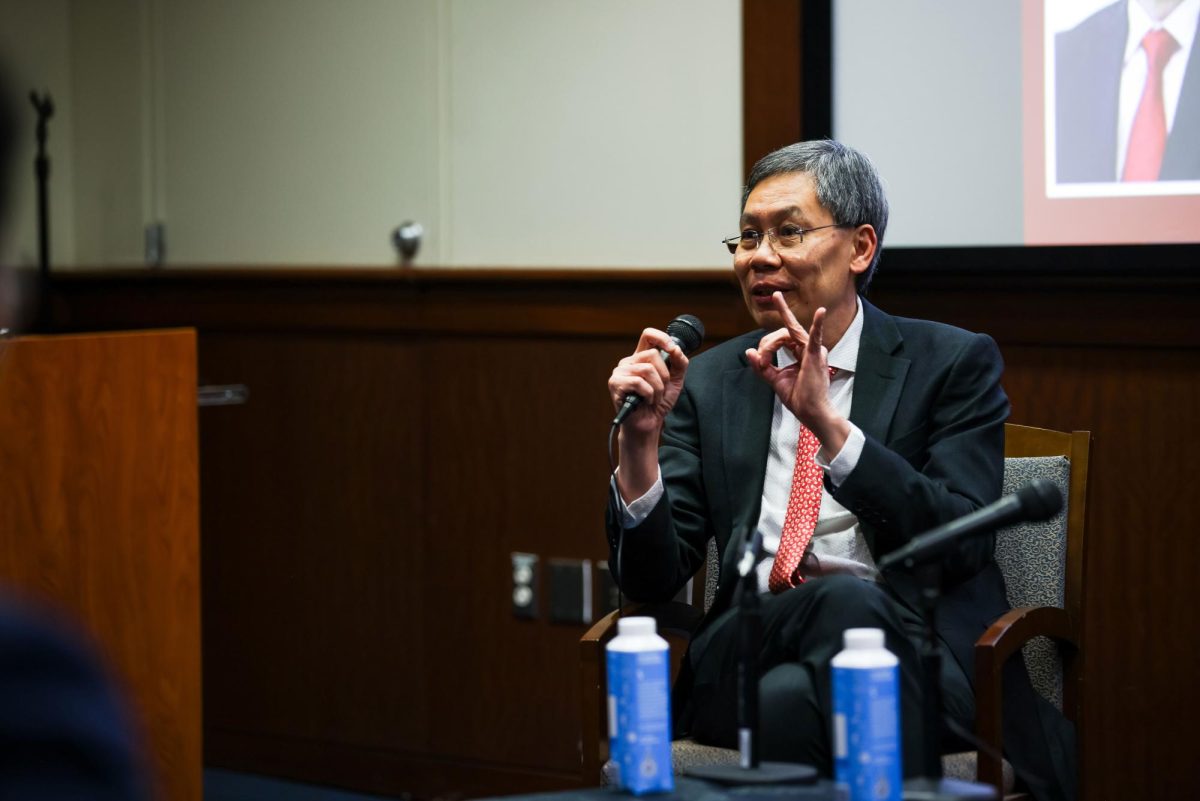A location in downtown D.C. guarantees GW more than just access to top policymakers: The District’s thriving real estate market has also made the University one of the richest landlords in higher education.
The University has increasingly snapped up commercial real estate and seen its existing stockpile gain value. Investments in real estate have tripled over the past decade and appreciated by $20 million in the past year, totaling $813 million by the end of June, according to a financial report released last month.
That figure is set to keep rising over the next several years as GW pays millions to redevelop 86,000 square feet of office and retail space in one of D.C.’s most coveted addresses on Pennsylvania Avenue. The site, which will give GW more profitable office rent payments, will have a GW-picked developer by the end of the year.
The savvy investments in commercial buildings like The Avenue and 2100 Penn Ave. have helped usher in an era of growth, giving GW a cushion to build ambitious academic buildings, hire hoards of faculty and boost financial aid. Real estate gains have outpaced GW’s endowment growth, which has doubled over the past decade to reach $1.37 billion.
“As an investment strategy, it’s been incredibly successful. Just look at the Avenue project. The revenue they generate is what is enabling us to build academically,” University President Steven Knapp said last week.
But with the largest slice of GW’s investment portfolio made up of assets that are tough to unload quickly, it would put a financial stress on the University if crisis hits Foggy Bottom’s real estate market, credit rating agencies have warned.
GW, with about 46 percent of its investments in real estate, stands out in higher education. Real estate makes up an average of about 7 percent of colleges’ investment portfolios, according to a recent report by the National Association of College and University Business Officers.
Among the schools that GW considers its peers, even those located in high-demand cities hold, at most, 15 percent of their endowments in real estate. New York University has about 5 percent of its investments in real estate, while Boston University has 14 percent.
Managing risk
Credit ratings agencies like Standard & Poor’s and Moody’s Investors Service have each said with GW’s real estate holdings, the University may be relying too much on one area.
S&P pointed to GW’s “significant” real estate holdings as a problem that could lead to a downgrade from its A+ rating if it becomes an even larger piece of its portfolio, according to last year’s credit ratings report.
“It’s great that it gives income, but in crisis, having high amounts of real estate won’t help,” S&P analyst Charlene Butterfield said. “There’s no crystal ball, but we view liquidity as good.”
She added that GW’s high dependence on tuition to cover operating expenses and more than $1 billion of debt are GW’s main financial issues, saying, “even though its real estate is off-setting, it’s not what is driving the rating right now.”
Similarly, last year’s report from Moody’s said the concentration of real estate in Foggy Bottom forces GW to roll with the tides of the downtown D.C. real estate market.
“Though that real estate market has experienced significant price appreciation over recent decades, the University’s financial strength is sensitive to changes in that particular market,” the Moody’s report states.
A former official familiar with GW’s investments agreed, casting skepticism on GW’s plan to concentrate in one investment area.
“What if there were some sort of dirty bomb in D.C.? What’s going to happen to the value in all that? You’re not going to have the income coming in from that,” said the former employee, who spoke on the condition of anonymity.
A stable D.C. market
The properties in GW’s portfolio include high-end office spaces lining the most prestigious street in D.C., an apartment complex, two hotels and upscale restaurants. As one of D.C.’s top landowners, GW has bought up prime real estate in Foggy Bottom, picking up rent payments from organizations like the World Bank.
The amount that GW earns from rent will soar past last year’s $77 million after the University renovates buildings at 2100 Pennsylvania Ave. into high-end office and retail spaces.
Rent payments have been a steady stream of revenue for GW and helped to make up for GW’s heavy reliance on tuition dollars.
Senior Associate Vice President of Operations Alicia Knight said redeveloping 2100 Pennsylvania Ave. will help the University maximize its income after pulling in rents from mom-and-pop restaurants and one large corporation for years in that location.
Co-Chair of the GW finance department Robert Van Order said downtown D.C. is “relatively stable” because the area is propped up by the fact that the federal government isn’t moving away.
“Nothing is perfect. It’s always possible for the government to cut back, but the local industry is pretty stable,” Van Order said.
He pointed to the D.C. market during the 2008 real estate crash “holding up pretty well” despite market turmoil across the country. GW’s real estate investments lost about $23 million in the year after the crash, though it rebounded the next year.
Anthony Yezer, an economics professor who specializes in real estate, said GW’s location around the federal government also helps office spaces stay filled even during a recession.
“Commercial real estate rents move around a fair amount, but we are in Washington,” Yezer said. “It makes us counter-cyclical. It smoothes out the cycle. That’s worked out for us pretty well.”







